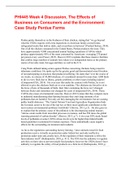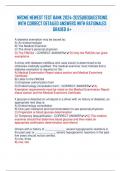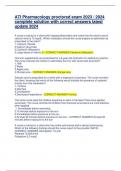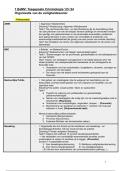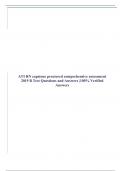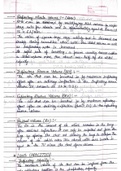Case uitwerking
PHI445 Week 4 Discussion, The Effects of Business on Consumers and the Environment: Case Study Perdue Farms
- Vak
- Instelling
PHI445 Week 4 Discussion, The Effects of Business on Consumers and the Environment: Case Study Perdue Farms Perdue prides themselves in the freshness of their chicken, stating that “we go beyond what the USDA requires with extra inspections in American family-owned farms, refrigerated tru...
[Meer zien]
